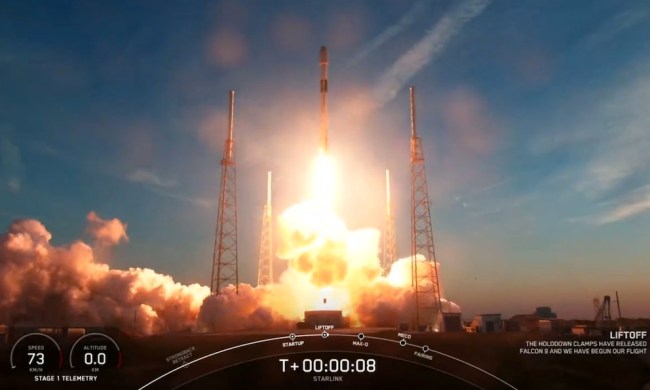It’s hard to go wrong with a time-lapse of a star-filled sky, but throw in the imposing accouterments of a rocket launch site and you end up with something really rather special.
A beautiful time-lapse (top) released recently by the European Space Agency (ESA) captures a stunning starry sky over its Spaceport in French Guiana, South America.
The video kicks off with a glorious view of the Milky Way before showing other dazzling scenes that include various parts of ESA’s launch facility.
“Imagine yourself stepping out of the launcher assembly building or standing on the launch pad in front of the 90-meter-high mobile gantry to look at the stars,” ESA says in a message accompanying the video.
The site will see the launch of Europe’s next-generation rocket, the heavy-lift Ariane 6.
The Ariane 6 will comprise two versions, the A62 featuring two strap-on boosters, and the A64 with four. At just over 60 meters, the Ariane 6 is about the same height as SpaceX’s workhorse Falcon 9 rocket, which just this weekend set a new flight record.
Which of these two versions is used will depend on the nature of the mission. The A62 Ariane 6 rocket, for example, can launch payloads of between 8,800 and 15,400 pounds (4,000 to 7,000 kg) while the A64 can cope with payloads of between 24,250 and 35,300 pounds (11,000 to 16,000 kg).
ESA’s next-generation rocket will weigh almost 900 tons when launched with a full payload, a weight described by Europe’s space agency as “roughly equivalent to one-and-a-half Airbus A380 passenger airplanes.”
The video below shows what a typical Ariane 6 mission could look like.
The Ariane 6 fairing that sits atop the rocket is 20 meters (65.6 feet) tall with a 5.4-meter (17.7 foot) diameter. The component recently arrived at the launch site and will undergo a series of tests prior to its first journey into space.
The new rocket had been scheduled to embark on its first-ever launch in 2020, but various delays — including some caused by the coronavirus pandemic — have pushed the mission to the spring of next year.
In the meantime, if ESA’s video has inspired you to try shooting your own star-filled time-lapse, this video tells you all you need to know.


